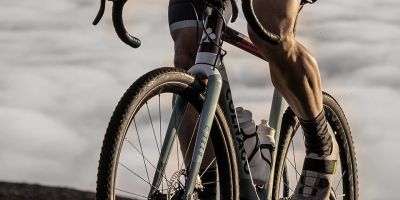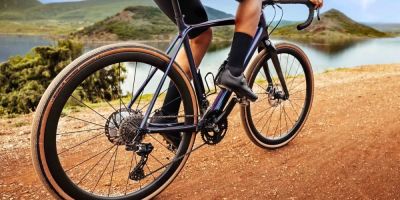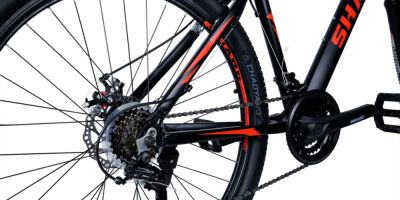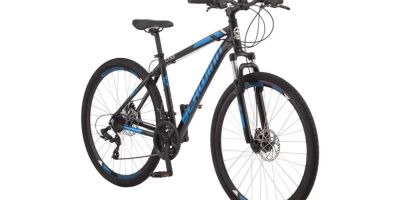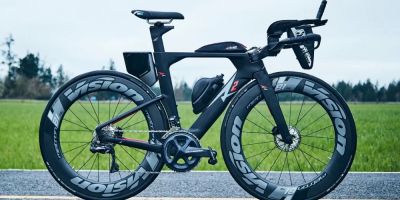Understanding the Challenges of Biking in Hot Weather
Biking in hot weather is one of the most exhilarating yet demanding experiences. As someone who regularly rides through the sweltering summer heat, I can tell you that cycling in the heat requires careful planning and awareness. Whether you're commuting, training, or just enjoying a weekend ride, managing the heat is key to ensuring a safe and enjoyable experience. Overheating, dehydration, and fatigue are all serious risks that can ruin your ride. But with the right approach, you can stay cool, ride longer, and even enjoy the summer sun!

Conte's Bike Shop
3449 Wilson Blvd, Arlington, VA 22201, USA
How Heat Affects Your Body During Cycling
The human body is designed to handle a variety of environmental conditions, but excessive heat can overwhelm its cooling mechanisms. When you're biking in hot weather, your body generates heat, which it must release through sweat and increased blood circulation to your skin. This process works well under normal circumstances, but when the temperature soars, it can become less efficient. As your core temperature rises, you may experience dizziness, cramps, and even heat exhaustion.

Bicycle Barn LLC
839 Reading Rd, East Earl, PA 17519, USA
Personal Experience: My First Hot Weather Ride
I remember my first experience biking in intense summer heat. I had planned a scenic route through the countryside, expecting a pleasant ride. But by the time I reached the halfway point, I felt exhausted and overheated. My legs felt like lead, and I couldn't seem to get enough air. I had underestimated the importance of preparing for the heat. Thankfully, I learned some valuable lessons from that ride, and now, I take certain steps before every summer ride to ensure my safety and comfort.
Key Tips for Cycling Safely in Hot Weather
1. Hydration is Key
Staying hydrated is one of the most important aspects of biking in hot weather. Dehydration happens faster than most cyclists realize, especially when the body is working hard to cool itself down. For every hour of cycling, aim to drink at least one bottle of water. Sports drinks that replenish electrolytes can be beneficial, but always make sure you're drinking water as your primary source of hydration. Start your ride hydrated, and continue drinking throughout your trip to prevent dehydration from sneaking up on you.
2. Choose the Right Time of Day
Timing your ride can make a huge difference. The sun is hottest between 10 AM and 4 PM, so if you can, try to schedule your rides in the early morning or late evening. This is when temperatures are typically lower, and the sun's rays are less intense. For those who prefer riding during the day, try to plan your route in areas with shade, such as tree-lined paths, to minimize exposure to direct sunlight.
3. Wear Light, Breathable Clothing
What you wear can make a huge difference when cycling in hot weather. Choose light-colored clothing made from moisture-wicking materials. These fabrics help keep sweat off your skin, allowing it to evaporate and cool you down. Avoid dark colors, as they absorb more heat, and steer clear of heavy, non-breathable fabrics. A good cycling jersey and lightweight shorts or bibs will not only help keep you cool but also provide you with comfort during long rides.
4. Use Sunscreen and Protect Your Skin
Exposure to the sun can lead to painful sunburns and long-term skin damage. Apply sunscreen to all exposed areas, including your face, arms, and neck. Look for a sunscreen that is water-resistant and has a high SPF to protect your skin even when you’re sweating. Don't forget to wear sunglasses with UV protection to shield your eyes from harmful rays, and consider wearing a lightweight hat or cycling cap under your helmet for additional sun protection.
5. Adjust Your Bike Setup
In hot weather, it’s essential to adjust your bike setup to ensure comfort and performance. Make sure your tires are properly inflated—over-inflated tires can cause a rough ride, while under-inflated ones can make pedaling harder. You might also want to add extra padding to your saddle or adjust the seat height for a more relaxed riding position to avoid excess strain on your body.
6. Take Frequent Breaks
In the heat, it’s important to listen to your body and take breaks when needed. Plan for rest stops every 20-30 minutes during longer rides. Find a shady spot to sit, drink some water, and allow your body to cool down before continuing. These breaks help prevent overheating and provide an opportunity to rehydrate, which is essential for maintaining energy levels.
7. Monitor Your Body’s Signals
Always pay attention to how your body is responding to the heat. If you start feeling dizzy, lightheaded, or fatigued, it’s time to stop and take a break. Heat exhaustion is a real risk when biking in high temperatures, and it can escalate into heat stroke if not addressed promptly. Watch for symptoms like nausea, excessive sweating, and weakness, and if these occur, seek a cool, shaded area and hydrate immediately.
8. Plan for Emergencies
No one plans to have an emergency while cycling, but it’s always good to be prepared. Carry a basic first-aid kit with you, as well as a mobile phone for emergencies. If you're riding in remote areas, tell a friend or family member your route and estimated return time. In case something goes wrong, you’ll want to have the ability to contact help quickly.
Real-Life Example: A Hot Weather Cycling Adventure
One of my most memorable rides in the summer heat was a challenging cross-country tour. I had planned this route for months, and it was going to be my biggest test yet. The first leg of the ride was smooth, but as the temperature climbed, I could feel the heat bearing down on me. By the time I reached the halfway point, I was sweating buckets, and my energy was rapidly fading. It was then that I remembered the advice I’d read about taking breaks and hydrating properly. I stopped at a local gas station, refilled my water bottle, and took a 15-minute break in the shade. That small adjustment turned the rest of my ride into a much more enjoyable experience. I was able to finish my trip feeling accomplished and ready for the next one!
In Conclusion
Biking in hot weather doesn't have to be an unpleasant experience. With the right preparation, the right gear, and a solid understanding of your body's needs, you can enjoy cycling safely through the summer heat. Remember to stay hydrated, wear breathable clothing, take breaks, and keep an eye on how you're feeling. If you follow these tips, you'll be able to tackle the hottest of rides with confidence and ease!

